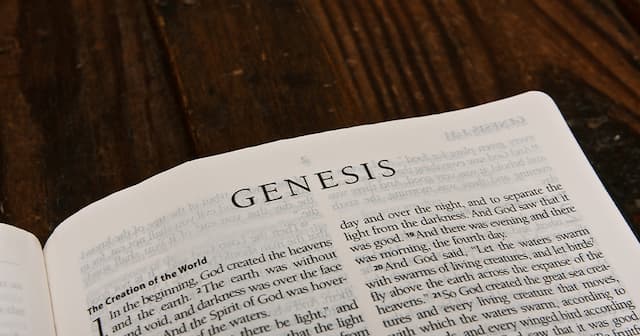The Gospel of Mark: Lord of Hope

What do Christians mean by hope?
I suspect the cynics among us confuse hope with naivete. They might see it as a point of view about reality—a glass half full instead of half empty. The hopeful few are in denial, and that kind of self-delusion cannot possibly be a virtue. If I weren’t a Christian, I’d probably agree, but if Jesus is Lord, then hope takes on a new meaning.
Failed by the Powerful
In Mark 5, Jesus encounters a man named Jairus. He was “one of the rulers of the synagogue,” a man of power and authority in his own right (Mark 5:21–22). Yet, on this occasion, this powerful man fell at the feet of a carpenter.
“And implored him earnestly, saying, ‘My little daughter is at the point of death. Come and lay your hands on her, so that she may be made well and live’” (5:23). This man does not seem naive - desperate perhaps - but not naive. He was not in denial about his daughter’s fatal condition. Without help, he knew she would die. But Jairus - despite his power and status - could not give her the help she needed. Jesus graciously agreed to follow.
As they walked, they encountered another person grasping for hope. This woman was the opposite of Jairus. She is unnamed by Mark, called simply “a woman” throughout the text. She had a debilitating disease, resulting in constant bleeding for the past twelve years. It was the sort of illness that made her unclean by the rules of Leviticus and still makes us uncomfortable two millennia later as we read her story. She had sought help, but Mark explains, “suffered much under many physicians, and had spent all that she had, and was no better but rather grew worse” (5:25-26). Jairus is a religious leader in full health and prosperity. The unnamed woman was sick, unclean, and poor. And yet the two figures have something in common: both of them had been failed by the powerful. No one seemed able to help them until they turned to Jesus.
The woman in particular had heard something about Jesus. There had been rumors about his mighty deeds. Both Matthew and Luke recall instances of healing merely by touching Jesus (Matthew 14:35-36; 6:19). She had heard the reports about Jesus and came up behind him in the crowd to touch his garment (Mark 5:27-28).
Hope is Action
While hope is not naivete, its most obvious opposite is despair. The difference between despair and hope is action. Despair and hope both see the world as it is - to a degree - but they respond differently. Despair yields to a sad state of circumstance. Hope believes there is a greater power still at work and acts in response to that power. Jairus goes to Jesus when all seems lost. The woman reached for Jesus after years of disappointment. Hope acts.
“And immediately the flow of blood dried up, and she felt in her body that she was healed of her disease” (5:29). I cannot promise you that every act taken in hope will be rewarded just as you desire, but this one was. This hope was true hope in true power. Jesus is not a physician. Jesus is not even a ritualist or a magician. He does not prescribe a cure. He is the cure. He does not speak words of power. He is the power. He is the incarnation of lordship, doing whatever he wills wherever he wills whenever he wills.
At this point, Mark makes a big point about how Jesus knew what had happened when others didn’t. He perceived “in himself that power had gone out from him” (5:30). It is not drained from him as if he is a battery. An act of power had come from him like light from the sun. He drew attention to the fact by asking, “Who touched my garments?” His disciples didn’t know the answer and thought it was a silly question to ask in a crowd. They had not witnessed the miracle, perhaps because they didn’t need to see it that day. But someone else needed to see it—two people actually.
The Two Witnesses
The first was the woman herself. She came to Jesus just as Jairus had. “...in fear and trembling [she] fell down before him and told him the whole truth” (5:34). As Lord, Jesus responded to her with a pronouncement and a command. “Daughter, your faith has made you well; go in peace, and be healed of your disease” (5:34). The woman was given the only name she will wear in this story: “daughter.” Jesus’ pronouncement attributed the healing to her childlike trust in his power. He commanded that she go live as one truly healed. This day had been a long time coming for her, and now her life began anew.
The second person who needed to see what Christ had done was the father walking alongside Jesus. The timing of the scene is nothing short of perfection. “While he was still speaking, there came from the ruler’s house some who said, ‘Your daughter is dead’” (5:35). I do not believe it was accidental that Jesus showed Jairus a daughter of Israel being healed by divine pronouncement at the same moment Jairus’ daughter was pronounced dead. Despair said, “Your daughter is dead, why trouble the Teacher any further?” But there was another voice. The Lord of Hope had something to say. “But overhearing what they said, Jesus said to the ruler of the synagogue, ‘Do not fear, only believe.’” (5:36).
Mark did not narrate the inner dialogue that must have taken place in Jairus’ heart and mind. Maybe he didn’t need to. That part of the story we know all too well. It is a conversation we have in our own heads all the time. A voice in our heads speaks despair, and Jesus speaks hope. We have to choose.
Who Defines Hope?
Praise be to God that Jairus chose hope. The little crowd grew smaller as Jairus, Jesus, Peter, James, and John went to Jairus’ home. This is appropriate. Hope tends to shrink crowds. Despair always has masses of devotees, but hope is a choosier companion. Together, Jesus, Jairus, and hope arrive at the home and are, of course, greeted by more despair. People are mourning a daughter’s death, but Jesus makes another lordly pronouncement: “The child is not dead but sleeping” (5:39).
When I read that part of the story, I am reminded of a tale about baseball umpire, Bill Klem. Klem was sort of the father of baseball officiating. As I understand it, he invented the safe and out signals still used today. On one occasion, a pitch was thrown over the plate, and Klem did not immediately call it a ball or a strike. He paused and delayed. Someone shouted for him to get on with it because the pitch was either a ball or a strike and no more delay would change it. Klem famously replied, “It ain’t nothing till I call it.”
Hope is defining reality by what Jesus says. When Jesus says sin is forgiven, it is. When Jesus says death is defeated, it is. When Jesus says a disease is healed, it is. And if Jesus says a little girl is about to wake up from a nap, then she is, no matter how many doctors say otherwise.
Mark tells us “they laughed at him” (5:40), and I don’t blame them. Hope is funny after all, but I doubt they got the joke. They couldn’t get the joke, as Jesus had not yet offered the punchline. “Talitha cumi,” he said, which means, “Little girl, I say to you, arise” (5:41). Jesus was walking, talking, and breathing lordship. He commanded the demons, and they obeyed. He commanded the storms, and they obeyed. Of course, this little girl was going to wake up when he called.
What do Christians mean by hope? Hope is seeing Jesus as Lord overall. Hope is not a denial of the fallen state of the world. Christians should know that better than anyone. Hope is rather a trust that Jesus is Lord and no circumstance changes that. The Lord does whatever he pleases, and he pleases to give us hope.
Dr. Benjamin Williams is the Senior Minister at the Central Church of Christ in Ada, Oklahoma and a regular writer at So We Speak. Check out his books The Faith of John’s Gospel and Why We Stayed or follow him on Twitter, @Benpreachin.






